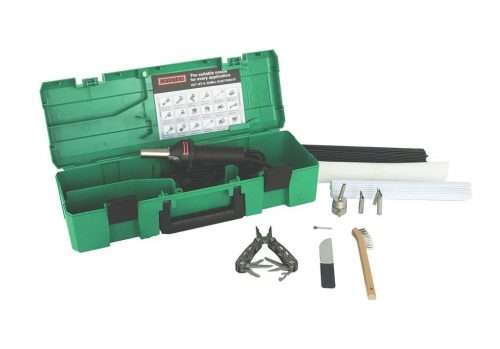Which Materials Can Be Successfully Welded?
‘Weldability’ is a term used in engineering to describe the suitability of a material for being fused using a welding process. Welding differs significantly from soldering or gluing. In soldering and gluing, a filler material is used to bond two surfaces together. In welding, extreme heat (and sometimes force) is used to actually bond materials together at a molecular level. This makes a well-welded joint extremely strong, and is why welding is favored for combining materials that need to withstand intense forces.
Not all materials are suitable for welding, though. Here is a list of materials with good weldability and a quick rundown of the processes used to fuse them.
Steel
Iron-based metals such as steel and stainless steel are among the best candidates for welding. Typically, the lower the carbon content of steel, the more weldable it is. MIG welding is one of the most effective ways of fusing steel joints. MIG welding involves the conducting of an electrical current through an electrode into a weld pool on the joint. This creates intense heat which chemically fuses the joint together.
Aluminum
Although aluminum is typically suitable for welding, great care needs to be taken to identify the kind of aluminum that is being worked with. Some aluminum is actually surprisingly bad for welding. Welding some aluminum compounds can produce a dangerous chemical: Ozone. Never weld without proper ventilation.
Titanium
Titanium is an extremely durable and heat-resistant metal used in aircraft, mining equipment and other high-stress environments. The supersonic airliner Concorde, for instance, was designed to be built partially out of titanium so that it could expand and contract safely at high speeds. Titanium is very expensive, so any welding mistake can be very costly. Titanium is suitable for welding, but almost always requires a shielding gas to be used as a part of the process to ensure even weld integrity.
Plastic
Metals are not the only materials that can be welded. Plastic welding can be used to bond plastics at a molecular level. Because plastics have different heat conduction characteristics to metals, less intense heat is needed to bond them. Hot air welding and silicone welding are two very popular ways of fusing plastics. Both of these methods are far less energy-intensive than metal welding. Great care needs to be taken not to inhale the gasses released by fusing plastics.
Glass
Glass welding is a very recent discovery. Even more recently, it has been discovered that glass can be welded to metals using special cutting-edge processes. Researchers at Heriott Watt University have pioneered glass-to-metal welding techniques that involve laser micro-welding.
Ultrafast laser pulses are aimed at the joint between a metal and glass. Heat accumulates at the interface and leads to localized melting – leaving behind a strong welded bond. This method is still in the developmental phase: it has been found that tiny cracks sometimes appear where the laser pulses have caused intense changes in temperature. If the method is perfected, it could open up many new possibilities in science and manufacturing.




